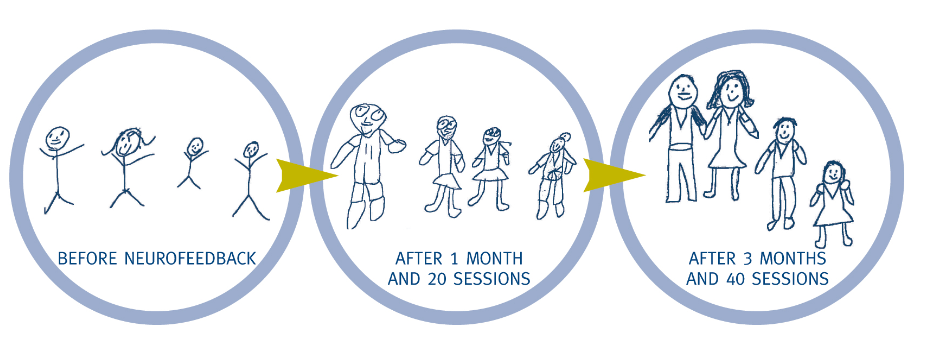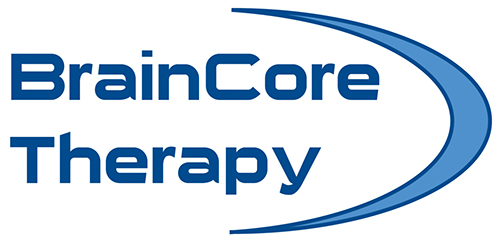Neurofeedback
Neurofeedback gets to the root of the problem in ADD and ADHD by training the brain
BrainCore Neurofeedback Therapy
BrainCore Therapy provides a unique, drugless, and non-invasive approach to treating Brainwave Dysregulation that may be associated with the symptoms of many neurological based conditions including:
- ADHD/ADD
- Insomnia
- Panic Attacks
- Memory Loss
- Post Stroke
- Headaches
- Fibromyalgia
- Anxiety Disorders
- Autism
- PTSD
- Migraines
- Traumatic Brain Injury
- Learning Disorders
- Asperger's Syndrome
- And many others...
BrainCore Neurofeedback Therapy
Does Your Child Suffer With ADHD/ADD Or Autism? Trouble Falling Asleep Or Staying Asleep?
Here’s the good news: while medication provides temporary relief from the symptoms of ADHD and ADD, neurofeedback gets to the root of the problem in ADD and ADHD by training the brain’s attention networks to function better. We know from many studies that the brain is capable of enormous change and reorganization through practice. Neurofeedback involves massive practice to activate and strengthen attention networks in the brain so that you can sustain attention, without drugs. Neurofeedback is a proven method of ADD and ADHD treatment without medication.
Take a look at a nice video explanation done by Mike Cohen.
Repetition to harness neuroplasticity.
In 20 neurofeedback sessions, with feedback every half second, you get 72,000 chances to learn. That’s a lot of repetition and practice. Brain science has shown that repetitive exercise of brain networks results in brain change. This is called neuroplasticity. Neurofeedback allows you to harness neuroplasticity to get to the root of the problem and reshape your brain. Learn more.
Neurofeedback is just learning, guided by immediate feedback.
Neurofeedback is like the game when children have to find a hidden object. You give them hints: “You’re getting warmer” when they get closer to the target, and “You’re getting colder” when they are headed away from the goal. With frequent enough hints, they can find the object, no matter where it is hidden. The hints are feedback about their efforts to reach their goal. As long as they learn from the feedback and adjust their search based on these hints, they will be able to reach the target.
When you do neurofeedback, the process is exactly the same – feedback guided learning. You are trying to reach your brain change targets. You get a cue or signal every half second, to tell you when you have reached the brain training target and when you have not. With 20 neurofeedback sessions, you get 72,000 hints. That’s a lot of opportunities to learn, to guide your brain towards your goals.
“Neurofeedback should play a major therapeutic role in many difficult areas. In my opinion, if any medication had demonstrated such a wide spectrum of efficacy it would be universally accepted and widely used.”
"With neurofeedback the child is exercising the nerve pathways that control attention and mental processing. As these neural pathways are exercised, children develop a sense of what concentration feels like, and they get excited about it. After practicing these exercises over a period of time, the pathways involved in attention and learning seem to work more efficiently. This enhanced brain activity becomes a natural part of the child's functioning."
Dr. Frank Duffy is a Professor and Pediatric Neurologist at Harvard Medical School. Dr. William Sears is an Associate Clinical Professor of Pediatrics at the University of California, Irvine, School of Medicine and practicing pediatrician for more than three decades.
All experts agree: kids’ drawings reveal a lot about them, about their level of development. A boy with ADHD did each of these family drawings. Judging from the drawings, most people guess that several years passed between the first and third. But the dramatic changes you can see here took place in just three months after 40 neurofeedback sessions. Neurofeedback accelerates development.

Neurofeedback And Autism Spectrum Disorders.
We analyzed data from 45 clients diagnosed with an autism spectrum disorder who were seen for neurofeedback over a three year period at the NeuroDevelopment Center. Parents completed a well validated measure of social functioning called The Social Responsiveness Scale before and after 20 sessions. In the graph below, you can see substantial improvement in social functioning. All changes are statistically significant. The amount of change on the “Total” or overall measure score is considered a large effect size.

